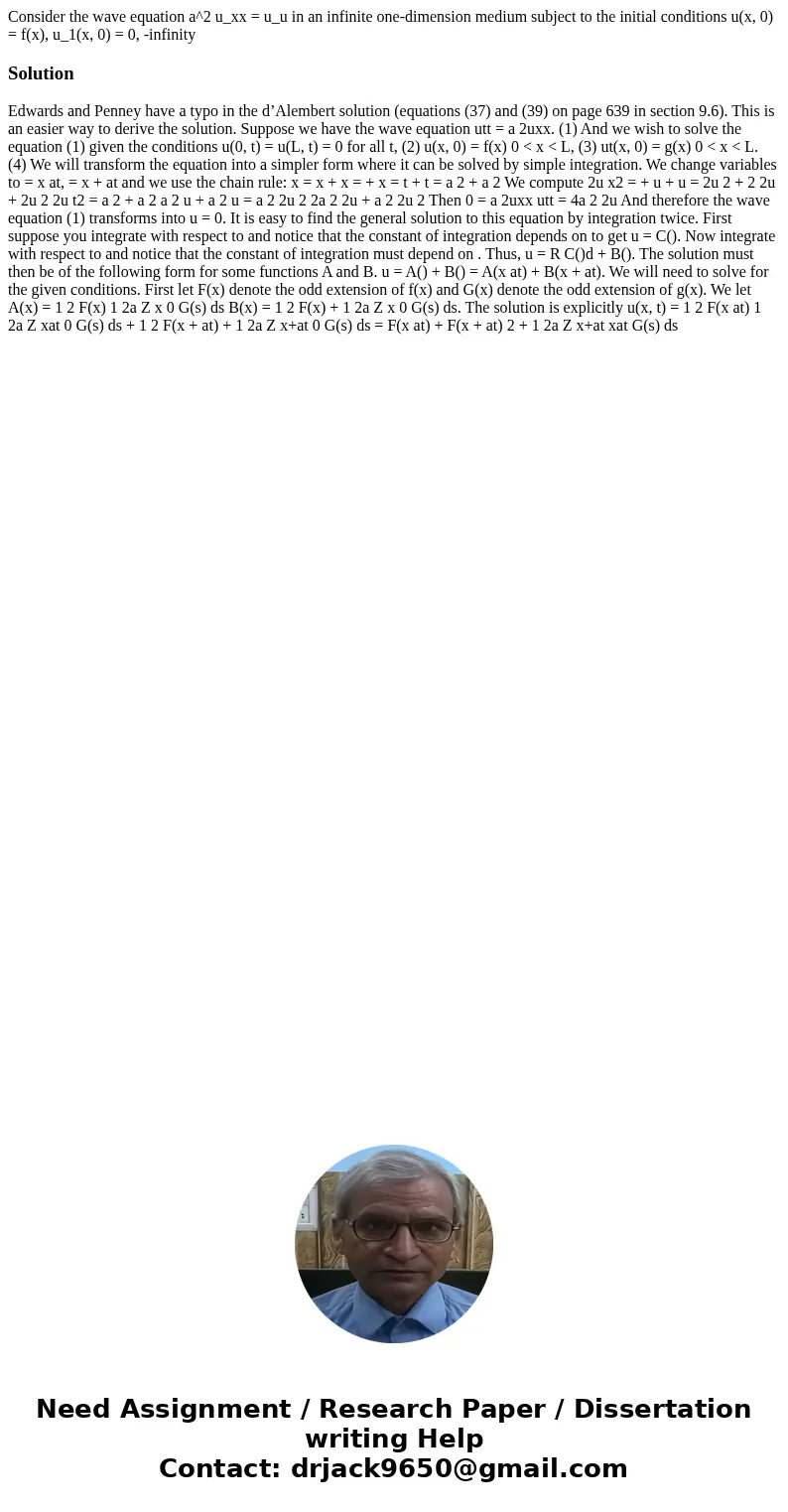Consider the wave equation a2 uxx uu in an infinite onedime
Solution
Edwards and Penney have a typo in the d’Alembert solution (equations (37) and (39) on page 639 in section 9.6). This is an easier way to derive the solution. Suppose we have the wave equation utt = a 2uxx. (1) And we wish to solve the equation (1) given the conditions u(0, t) = u(L, t) = 0 for all t, (2) u(x, 0) = f(x) 0 < x < L, (3) ut(x, 0) = g(x) 0 < x < L. (4) We will transform the equation into a simpler form where it can be solved by simple integration. We change variables to = x at, = x + at and we use the chain rule: x = x + x = + x = t + t = a 2 + a 2 We compute 2u x2 = + u + u = 2u 2 + 2 2u + 2u 2 2u t2 = a 2 + a 2 a 2 u + a 2 u = a 2 2u 2 2a 2 2u + a 2 2u 2 Then 0 = a 2uxx utt = 4a 2 2u And therefore the wave equation (1) transforms into u = 0. It is easy to find the general solution to this equation by integration twice. First suppose you integrate with respect to and notice that the constant of integration depends on to get u = C(). Now integrate with respect to and notice that the constant of integration must depend on . Thus, u = R C()d + B(). The solution must then be of the following form for some functions A and B. u = A() + B() = A(x at) + B(x + at). We will need to solve for the given conditions. First let F(x) denote the odd extension of f(x) and G(x) denote the odd extension of g(x). We let A(x) = 1 2 F(x) 1 2a Z x 0 G(s) ds B(x) = 1 2 F(x) + 1 2a Z x 0 G(s) ds. The solution is explicitly u(x, t) = 1 2 F(x at) 1 2a Z xat 0 G(s) ds + 1 2 F(x + at) + 1 2a Z x+at 0 G(s) ds = F(x at) + F(x + at) 2 + 1 2a Z x+at xat G(s) ds

 Homework Sourse
Homework Sourse